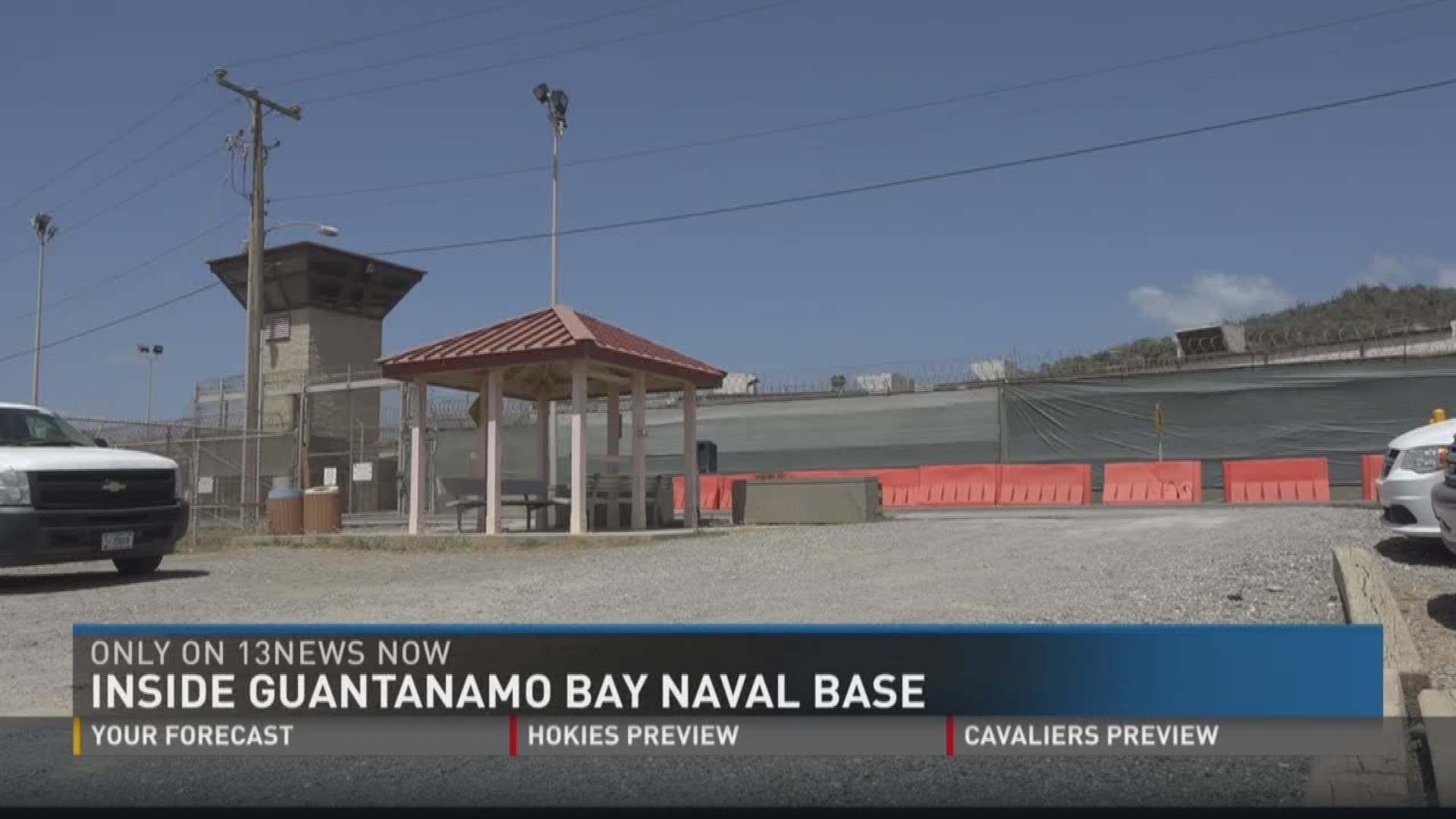You've probably heard a lot about Guantanamo Bay Naval Base in Cuba, because of suspected terrorists who are held there. 13News Now traveled to the base and learned it is about much more than what you might think in this five-part series.
Guantanamo Bay, Cuba - Inside a hanger attached to the only airport terminal on Guantanamo Bay Naval Base, LCDR Jody Brandt performs a safety check of his aircraft.
The operations officer is awaiting orders on this late September day, which may involve emergency transportation or supply runs for the base that is cut off from Cuba.
"Because of our isolated location, we can't go out to Cuba Home Depot to get a 2x4," said Brandt.
Brandt's aircraft is much smaller, unlike the larger C-130 aircrafts that make larger supply runs for items like food.
"When we have to go get something and it's urgent, we can dial up one of these and get it off deck pretty quick," Brandt said.
He will transport people who need urgent medical attention that the Naval Hospital on base cannot provide, but he also transports non-humans on his plane.
"We will actually put an 80-pound German Shepard on the plane... and its handler, obviously. They (are) shockingly well behaved, better behaved that some kids I've put on this plane," Brandt said with a smile.
Despite that isolation in the shadow of the mountains of communist Cuba, safety goes beyond just that from the 61 suspected terrorists with whom he shares the same space.
There is Military Police who patrol the roads on the base and keep an eye out for speeders in front of W.T. Sampson Elementary & High School, where Brandt's daughter attend fourth grade.
"It's like living in '50s America," is how Brandt describes life on the base. A fitting, if not unwitting reference perhaps to 1958, when the Navy enclosed Gitmo from Cuba.
We were the first media to be allowed at the now-padlocked North East Border gate, which is attached to the roughly 17-miles of fence that separates the base from Cuba. On the other side is an 8-hour drive by car to the capital of Havana, where politics continue to play out.
After decades of silence, the U.S. and Cuba normalized relations less than two years ago.
"As Castro indicated, we still have some serious differences," said President Obama during a joint speech with Fidel Castro in which the Cuban leader demanded the return of Guantanamo Bay Naval Base, which the Obama Administration insists will not happen.
In an agreement made before Castro's brother Fidel took power in the late 1950s, the United States pays a paltry $4,085 a year for the land. In protest, the Cuban government refused to cash the checks, with the exception of one, which the Castro brothers say was done accidentally due to a clerical error.
The Castros' efforts to chase the Navy base away stretches back to 1964, when they cut off the base's water supply. When that happened, then Base Admiral John D. Bulkeley had water shipped in on barges to supply the service members on base.
Finding the move too unbelievable an undertaking to be possible, Castro accused of stealing water from a nearby Cuban-controlled river.
To quell accusations of theft, Admiral Bulkeley famously severed the waterman in front of the media. The site of the waterman still remains to this day, with a sign above it that reads, "On 17 Feb 1964 Rear Admiral John D. Bulkeley Commander Naval Base ordered the water lines be cut and section removed to disprove the assumption that the United States was stealing water from Cuba."
Water no longer needs to be shipped to the base because a desalination plant was built that sucks ocean water in and converts it into an estimated one million gallons of fresh water to supply the base.
When Castro cut electricity to the base, generators were brought in to keep the lights shining for the thousands of people who live here.
There are now 19 generators on base that run on diesel that is shipped to the base, but efforts are being made for renewable energy.
In addition to a solar farm, in 2005 four 950 kilowatt wind turbines were installed at the base's highest point, John Paul Jones Hill.
According to the Navy, the wind turbine project at the base save taxpayers an estimated $1.2 million in annual energy costs. That is because the base now used 650,000 gallons less of the diesel used to power the generators.

